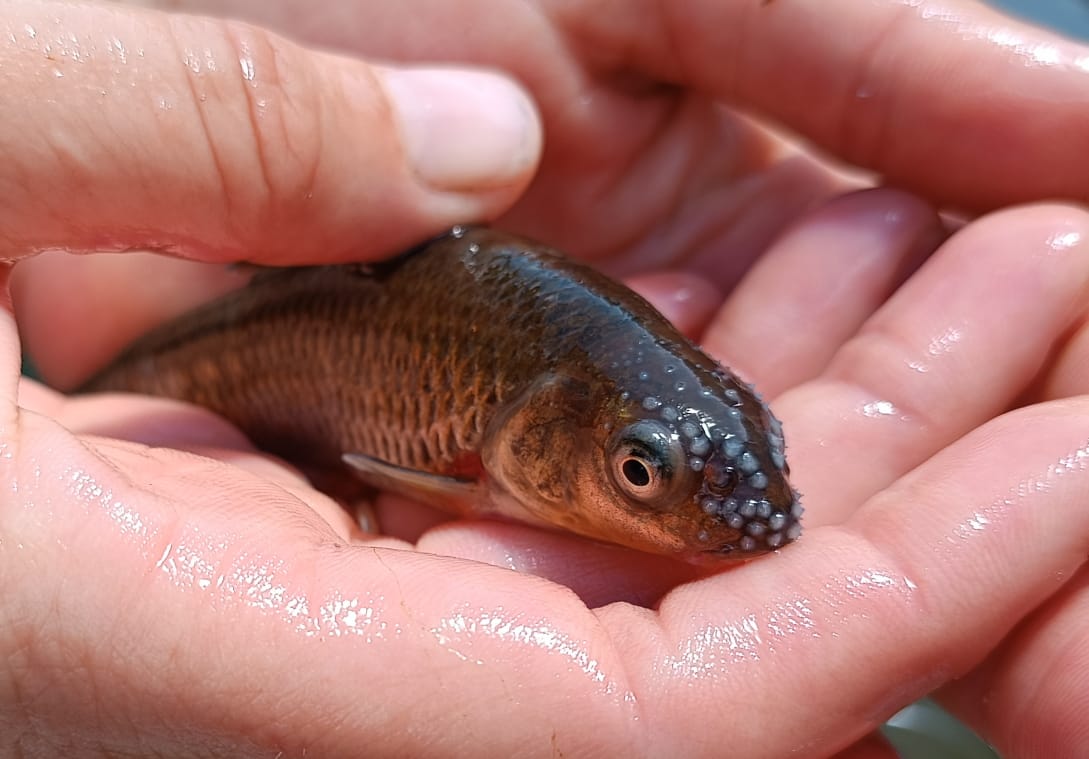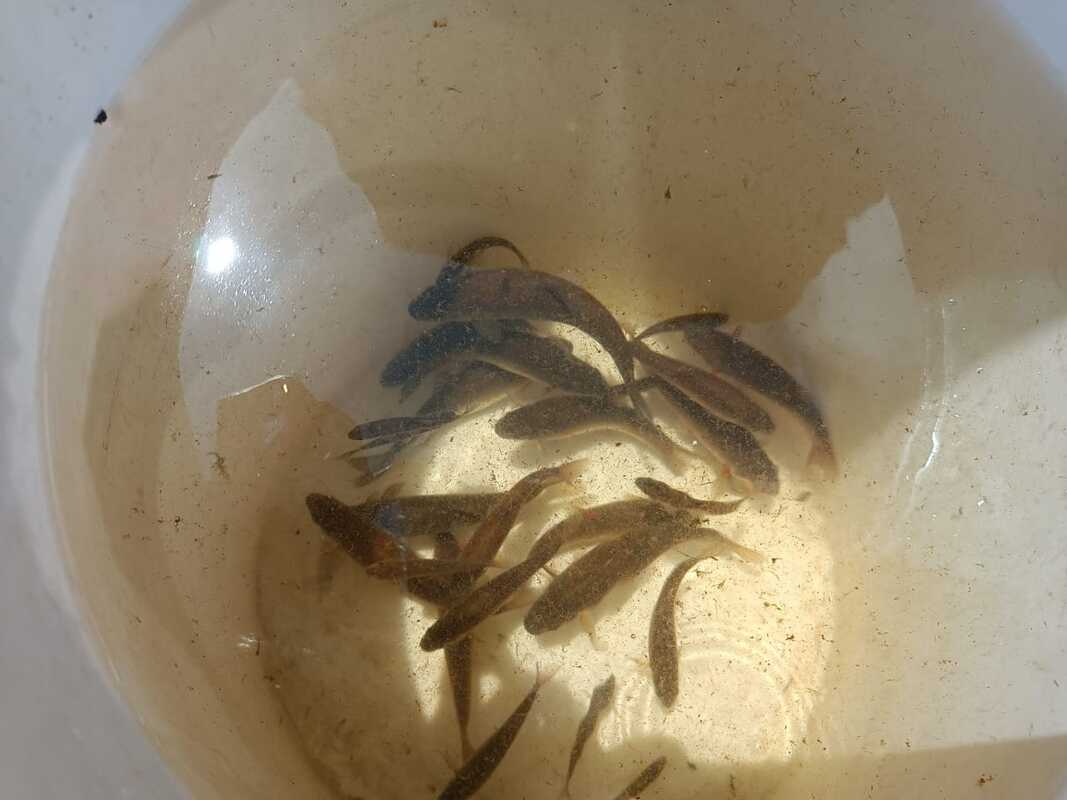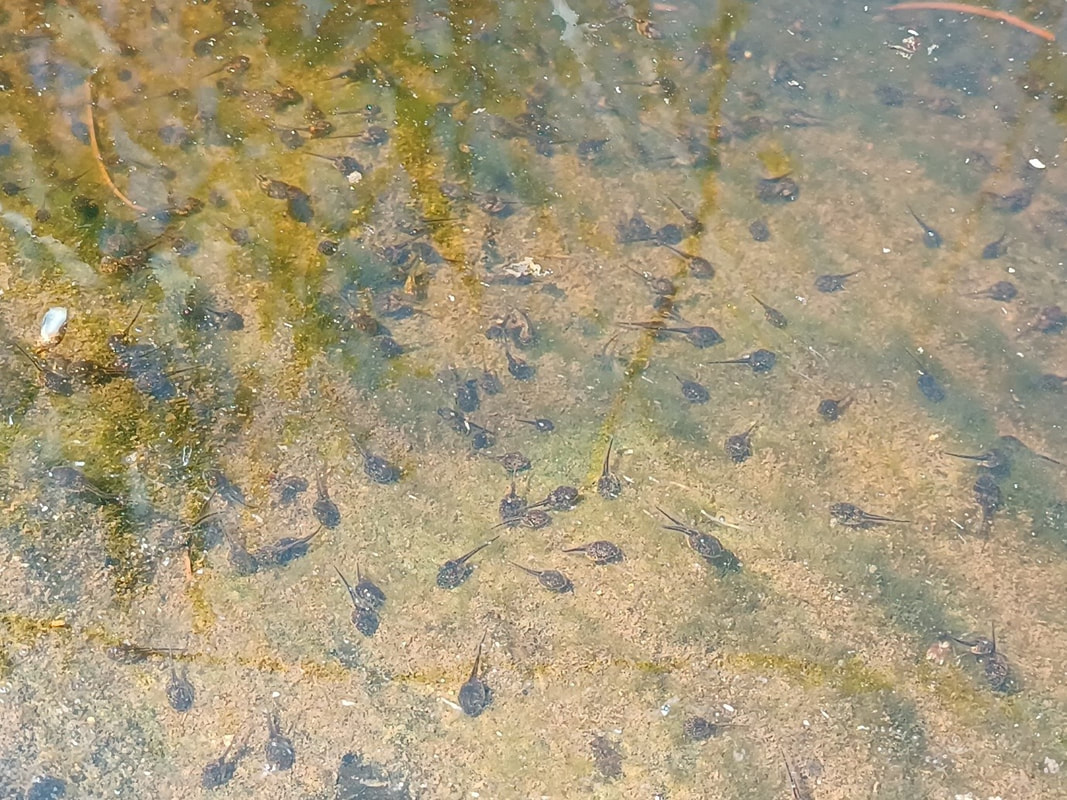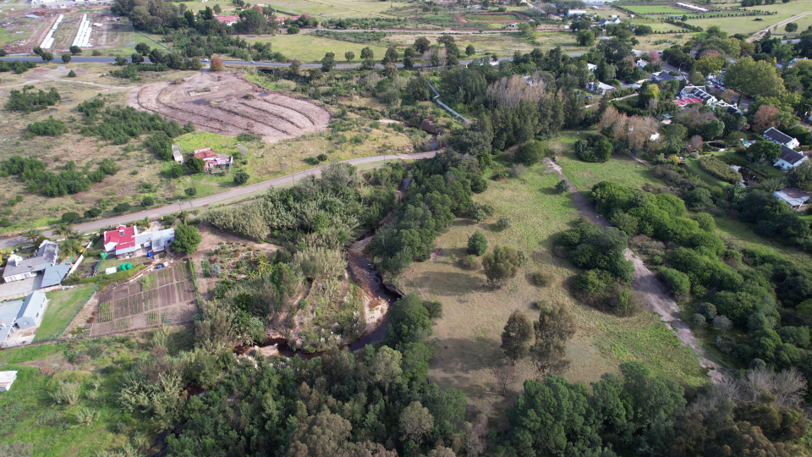|
Hydrological monitoring of our river systems is a vital part of conserving our aquatic species. To do this effectively, human-made structures and/or equipment are used to collect data and monitor the environment and its condition. The Department of Water Affairs and Sanitation is responsible for the management of hydrological gauging weirs across the country. These weirs need to be kept in working order to understand and monitor changes in river flow. At the end of last year, the conservancy played a crucial role in ensuring these weirs continue to provide vital information, while averting a devastating impact on a critically endangered fish. BACKGROUND The Tradouw Redfin (Pseudobarbus burchelli) is only found in the Huis and Tradouw Rivers, close to the town of Barrydale. These fish are critically endangered and threatened by two main factors: 1) Invasive fish (such as bass, and bluegills) that predates on the redfins, and 2) the reduced water flow in the Tradouw and Huis River systems that impacts water quality and fish habitat. Obtaining accurate data on river flow is therefore crucial to ensure the long-term survival of the species. In October 2022, the Department of Water and Sanitation (DWS – Hydrological Services) was about to commence a routine clean-up of the Huis River’s gauging weir, below the town of Barrydale. Recordings of the surface flow data is done using a gauging weir system which provides important data on the aquatic environment and its condition. An obstructed passageway at the weir will produce inaccurate readings of the flow of the river. The maintenance had been postponed due to the Covid-19 pandemic and excessive sediment had built up in the gauging pool. DWS was unaware that a large population of critically endangered Redfin was living in the pool above the weir that now needed to be cleared of sediment. Fortunately, some of the Grootvadersbosch Conservancy staff were doing fish monitoring in the Huis River and observed that the DWS was proceeding with removing sediment from the pool above the weir with a potential devasting impact on the redfin population. The Grootvadersbosch Conservancy team contacted Cape Nature who informed the DWS of the redfin species and its whereabouts. The DWS immediately postponed the maintenance until a collective agreement could be found to protect the fish. Thanks to all three parties: Cape Nature, the DWS, and the Grootvaderbosch Conservancy a rescue plan was then implemented to translocate the critically endangered Tradouw Redfin from the pool above the weir to a safe site on the Tradouw River. RESCUE PLAN Dr. Martine Jordaan, a Cape Nature fish specialist, led the rescue plan and the main objective was to catch as many redfins as possible and relocate them to a secure place. Firstly, sandbags were placed above the weir pool to temporarily isolate the pool from the river. Dr. Martine and her team then used fish nets, hand nets, and buckets to catch the fish in the isolated pool. Dr. Martine and her team observed, in a single netting, a total of >900 redfins, and thousands of tadpoles were seen on the pool’s surface. The fish were translocated to the dam at Joubert Tradouw Private Cellars, located in the upper regions of the Tradouw river. Some of the redfin populations were also translocated to the Tradouw River release sites. It is estimated that the expedition resulted in the successful translocation of over 4000 Tradouw Redfins. With all the fish safely removed, the DWS could then continue with the maintenance and removal of sediment. As indicated in the image below, the vegetation in areas A and B was removed and placed in area D. Area C is where the sluice valves are located and are used to lower the water levels. The red line in the image below indicates the area where the sandbag structure was positioned. This project created a unique conservation opportunity, where all parties worked together to achieve a common objective to protect our rivers. A further benefit was that the DWS is now engaging directly with Cape Nature to understand any other gauging weirs that might be close to important indigenous fish populations. There is now a plan to engage across organisations for the maintenance of river flow gauging stations. This will ensure a more secure and effective way to monitor our river systems while conserving, not only the Tradouw Redfin but, all indigenous fish in the Western Cape.
0 Comments
Your comment will be posted after it is approved.
Leave a Reply. |
AuthorGVB Conservancy Staff Archives
May 2024
Categories |





 RSS Feed
RSS Feed






